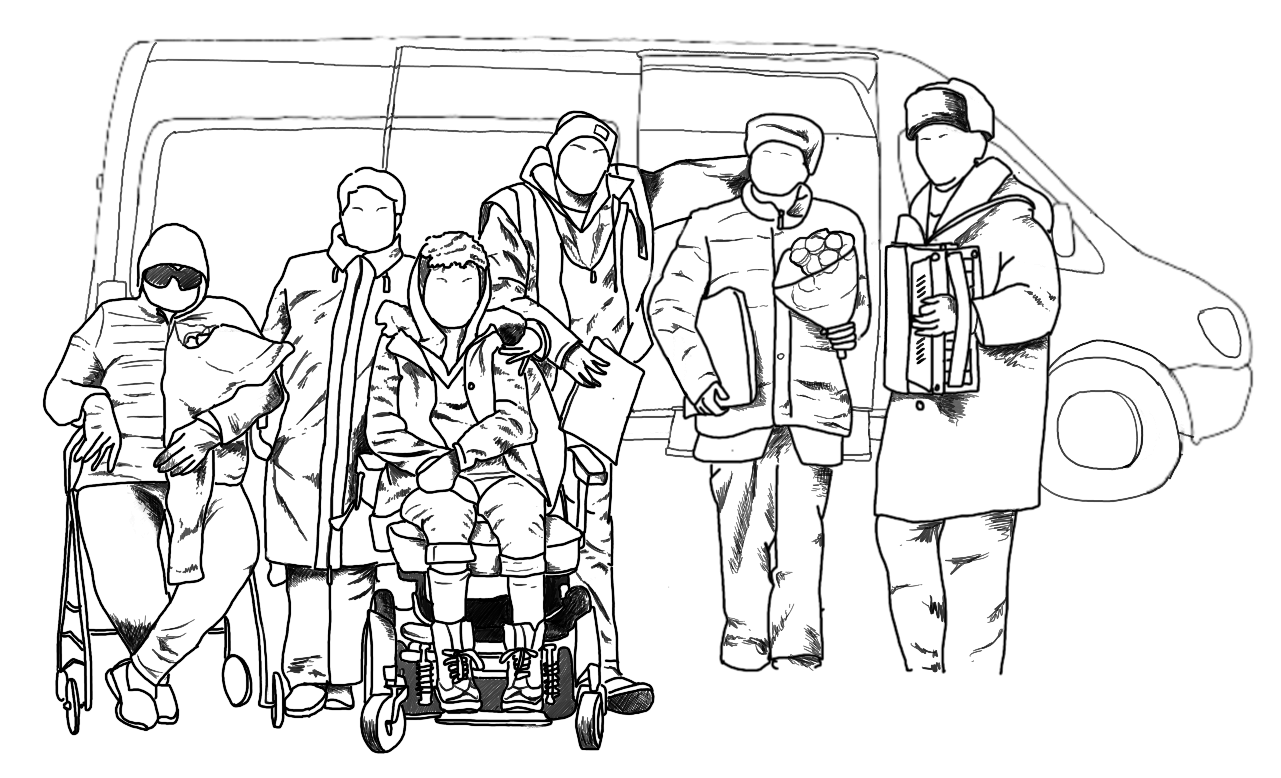
Ivi Fung
I admit that when it comes to movies, I haven’t exactly developed what some might call “taste.” When I was young and had some semblance of free time, I was a fairly avid moviegoer. Now, I mostly turn up at the theater for the latest Marvel explosionfest just so I can understand the memes on my social media feeds. I’ve gotten used to flashy special effects, workshopped quips and conventionally attractive casting choices.
“Give Me Liberty,” directed by Kirill Mikhanovsky, was a welcome break from all that.
Like a steak marinated in pineapple juice — that fruit’s enzymes are powerful — this comedy-drama is tender.
“Give Me Liberty” centers on ordinary people and their ordinary struggles. Unlike the tokenizing representation of most blockbuster movies, this movie primarily features marginalized populations in America: Russian immigrants, African Americans, those living with mental or physical disabilities.
If we had to choose a main character, it would be Vic, a medical transport driver and second-generation Russian immigrant. But there really isn’t a central narrative; the characters all struggle with eviction, or transporting a couch, or work troubles, or cultural clashes in a series of scenes that don’t have a clear connecting thread. The official (and slightly misleading) synopsis you’ll find after a quick Google search implies a film of high-stakes vehicular maneuvers in the midst of a riot. But instead of the formulaic structure of a typical action movie, Mikhanovsky paints realistic character sketches with a humanist brush.
The film feels authentically Russian, particularly in its valuation of moral duty and compassion, even in — and especially in — times of duress.
Vic risks his job right at the start of the film, making an hourslong detour for the sake of getting his elderly Russian family and extended family to their Aunt Lilya’s funeral. A boxer named Dima gets on for the ride as well. In another film, he’d be portrayed as an idealistic underdog hero who sticks it to The Man and saves the day with his bold individualism. But this film explicitly spells out the consequences of his actions: As a medical transport driver, there are people who rely on him and depend on him, and when he shirks his duty, even for a noble purpose, his coworkers have to carry his weight. Nevertheless, Vic never stops caring about and making sacrifices for the people he meets, even strangers. The film ends with him and Tracy, a wheelchair-bound African American woman whose brother has been arrested for participation in a protest, bringing his education money over to the police station for her brother’s bail.
The whole film is filled with a sense of community. Across languages, across vastly different life experiences, people find ways to help each other and connect with one other. Music plays a large role; at Aunt Lilya’s funeral, her relatives sing a Belarussian revolution song and read a passage about how in her hometown Jews, Poles, Russians and Belarussians lived in harmony with each other. The Russian elders sing “Go Down, Moses” on the bus, and Tracy and Vic connect over old vinyls.
From moving mattresses to gifting birthday swords, the characters of “Give Me Liberty” show a unique and inspiring humanity. The film’s humor is surprisingly relatable, and in the recurring case of the nearly-unopenable saeurkraut can ends heartwarmingly; nothing is more intimate than two pairs of hands trying to open the same pickled cabbage jar lid together.
Moreover, everyone is treated with respect: no one makes fun of anyone for their race, gender, or level of abledness. That’s one of the things I appreciated most about this movie. It’s important to confront discrimination and acknowledge it where it occurs, but it can be exhausting to see your minority group represented in media only for the purpose of dramatic suffering.
At the ALS center, where Vic and company make a brief stop to help a diabetic relative, a Russian accordionist and Dima clap along with and play a melody for the singers at an ALS talent show. Others among Vic’s entourage admire a person with ALS’s beautiful artwork, a forest of multicolored trees. It’s an honest scene, and a touching one.
People exist. That in itself is a gripping story all on its own.
Claire Fang | claire.fang@yale.edu .







